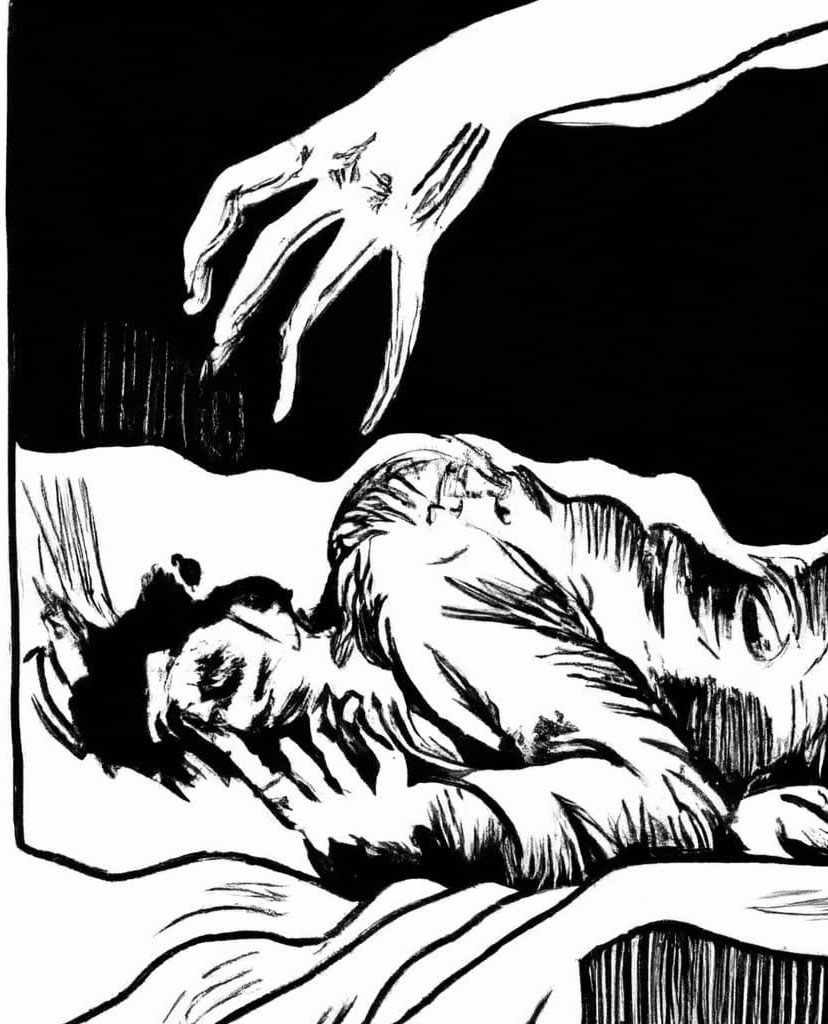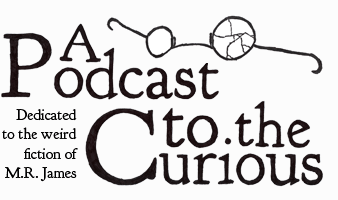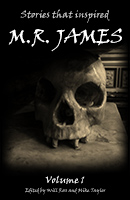 In the first episode of Season 4 tm, Mike and Will are delighted by Let Loose by Mary Cholmondeley, a tale of crypts, clergymen and crikey, what is that in the dog’s mouth?
In the first episode of Season 4 tm, Mike and Will are delighted by Let Loose by Mary Cholmondeley, a tale of crypts, clergymen and crikey, what is that in the dog’s mouth?
Big thanks to Jim Moon for allowing us to use extracts from his excellent reading of the story. You can listen to the whole thing over on the Hypnogoria podcast feed.
Show notes:
- Mary Cholmondeley (Victorian Fiction Research Guides)
You can learn more about Mary’s life and work in this article, or for a briefer summary, try wikipedia. - Temple Bar Magazine (Wikipedia)
This story first appeared in the April 1890 edition of Temple Bar magazine, a literary periodical that ran for nearly fifty years. - ‘The Dead’ by Mathilde Blind (Poetry Nook)
The two lines quoted at the start of this story come from this poem by 19th century British author and poet Mathilde Blind. - The Dark Triad (Wikipedia)
During this episode Mike describes the character of Blake as possessing at least two of the personality traits that make up the Dark Triad, a psychological theory of personality first described by Delroy L. Paulhus and Kevin M. Williams in 2002. - History of Charnel Chapels (Rothwell Charnel Chapel Project)
In this story we discuss the crypt at Wet-Waste-on-the-Wold church as being more of a charnel house. - Bartleby the Scrivener (Wikipedia)
Blake’s repeated use of the phrase “I’d prefer not to…” put us in mind of Herman Melville’s famously work-shy clerk Bartleby! - Asaph (wikipedia)
In this story, the vicar is locked in an ongoing arguement with a neighbouring clergyman about the meaning of the word ‘Asaph’. Dry stuff, but if you are interested there is a summary of the different opinions on this matter on Wikipedia. - Fists of fear: severed hands in films – ranked! (theguardian.com)
Here’s a fun listicle of movies where, like in Let Loose, a severed hand returns to cause havoc. A special mention should go to the our personal favourite, the ‘hand’ scene from Evil Dead 2! - Gelert the Faithful Hound (NationalTrust.org.uk)
Here’s another famous example from legend of a faithful dog who was killed by his master after a tragic misunderstanding. #RIPBrian - Women’s Weird: Strange Stories by Women, 1890-1940 (Handheld Press)
We quoted a line from Melissa Edmundson’s introduction to this anthology, ‘[Let Loose] predates James’s stories if haunted churches and crypts, so that it could be legitimately said that James’s stories were in the style of Mary Cholmondeley’.
Podcast: Play in new window | Download
Subscribe: RSS
Tags: Let Loose, M.R. James, Mary Cholmondeley, Yorkshire








I was letting myself believe Brian would be OK because after all, this wasn’t some “Carnacki the Ghost Finder” pet-carnage fest! Ouch. Fun listen though, thanks!!
Another notable disembodied hand is found in The Gateway of the Monster by William Hope Hodgson from 1910. The hand in question is a massive disembodied demonic hand floating through the air that tries to crush Carnacki (the ghost finder) to death only being deterred by the occult power of Carnacki’s electric pentacle.
There was also an animal in ‘Gateway of the Monster’, and it also didn’t end well — for the pet more than the narrator, too —
“[T]he dead body of the cat was picked up, and beaten with dull, sickening blows against the solid floor. That made me feel rather queer.”
I first heard this one when Jim Moon released his reading and I was hugely impressed with it then. I think he was looking forward to reading more of her work as much as I was looking forward to hearing them. Of course we were both to be disappointed! I love her writing style and sense of humour. Also the fact her narrator-hero is such a total ar****le. I suspect she knew many local Vicars just like the one described so entertainingly. As to her remaining unmarried that is another comparison with M R James. I suspect they were each quite happy with the situation. However, I am sure you are right that James disapproved of Cholmondeley’s other efforts and so left her story out. I am equally sure that he read it before he wrote ‘Count Magnus’! Not a criticism of Monty – ‘Magnus’ may have been perhaps unconciously inspired but it is certainly not a copy or ‘rip-off’. James tells his own version in his own way and it is itself enough to stand entirely alone.
It may be generational but to me ‘Brian’ has always meant a snail!
Have you done ‘Man-Size in Marble’? That is the other story by a female writer that immediately leaps to mind. That one sticks with me like few others – on a level with ‘Magnus’ and ‘A Warning’ for me.
Firstly, a big hand for Will and Mike.
And for anyone who hasn’t had enough hand-based horror, here’s a few more:
Narrative of the Ghost of a Hand – JS Le Fanu
The Beast with Five Fingers – WF Harvey
The Body Politic – Clive Barker
The Unrequited Glove – Tanith Lee
Enjoyable listen and what a single minded, pig-headed and inconsiderate protagonist! Poor dog – The Life of Brian was cruelly cut short (and I believe he was protecting and not attacking his master). Didn’t find the horror device of a disembodied hand scary though its origin was particularly bloody!
You both raised very good points about Mary (her recognition),MR James and the story being a potential (unacknowledged) influence on him. I think it is a little of every aspect you discussed – MR James and his “rules” for ghost stories, as well as him being a product of his time.
” … just assumed that her stories were ghostwritten by men”
I see what you did there.
Another belter, as per, chaps!
Kudos for the Beddgelert reference by Mike. As you were talking about the potential idea of a dog trying to save someone and being unwittingly killed, being a Welshman brought up on old national legends my mind jumped straight to the story of Gelert and how heart-breaking the notion is.
Great stuff and RIP Brian
What could go wrong?
https://archaeology-world.com/rabbit-hole-leads-to-incredible-700-year-old-knights-templar-cave-complex/
The caves are thought to date from the 19th century.
Check out the Oliver Stone movie, “The Hand”, starring Michael Caine, from the early 80s. An amputated hand goes on a killing spree. Or does it? https://ok.ru/video/2465220397748
Just remembered another disembodied hand, albeit a much more obscure one.
In his 1965 book Ghosts And Hauntings Dennis Bardens collected dozens of supposedly true ghost stories. One of them concerns a couple who, if memory serves, were lodging in an old house, and were just sitting around relaxing when without warning two spectral heads came flying through the room seemingly in a panicked flight and were followed by a severed phantom hand.
This bizarre story gets about two paragraphs while the harrowing story of the family that sometimes heard a wheelbarrow outside their vacation home at night gets several pages and stories of people who had a bad feeling and then something bad happened get an entire chapter.
I’m not sure I agree with the extremity of the James parallels. Similar elements? Yes, absolutely. But I think something that really needs to be addressed is WHY these elements were present in their respective fiction in the first place. We know why James had all his stuff, it was present in him from a young age, it was his life. Why do they appear in this single tale by Ms. Cholmondeley? We know she comes from an Anglican Church background, and in her life was presumably exposed to many odd vicars who expounded much Biblical esotericism. So while it could be a realistic detail for her, for James it was coming from a wholly different source.
We all want to think our favourite writers are perfect originals, as you guys said, but they’re not–they’re unique reflections of a collection of inspirations that could only come together in that person and their specific experiences and circumstances. So to say that James, or any writer, is simply derived from someone else’s brilliance is pretty insulting. Not that you guys are doing that, but I know what that Edmundson quote is doing and I think it’s pathetic.
As for the story itself, I think it was fine, I didn’t really like her brisk style, I prefer something more ponderous for a ghost story, but that being said, every scene set in the crypt was really good. Especially Blake’s dark musings, perhaps influenced by Despard’s lingering malevolence, were rather effective.